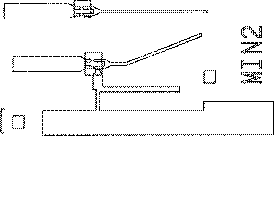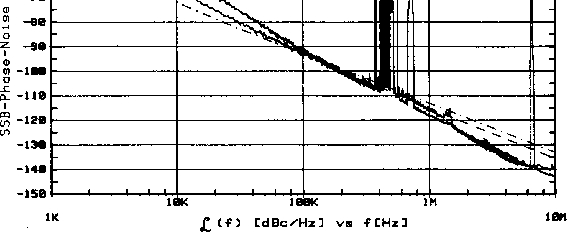

Fig. 1 Equivalent circuit of the oscillator to be optimized.
The new method to improve the design
of oscillators
is applied to minimize the single-sideband
phase noise of a planar integrated [![]() ]
free running
microwave oscillator at 15 GHz [
]
free running
microwave oscillator at 15 GHz [![]() ],
[
],
[![]() ].
A GaAs MESFET NE710 is used for the active element which is connected at
the gate and source terminals with
microstrip lines as resonators.
The equivalent circuit of the oscillator is depicted
in Fig. 1.
In this special case, the five design parameters
].
A GaAs MESFET NE710 is used for the active element which is connected at
the gate and source terminals with
microstrip lines as resonators.
The equivalent circuit of the oscillator is depicted
in Fig. 1.
In this special case, the five design parameters
 ,
,  ,
,  ,
,  , and
, and  of the linear network are optimized
subject to a system of 20 highly nonlinear differential
equations (
of the linear network are optimized
subject to a system of 20 highly nonlinear differential
equations (![]() ), (
), (![]() ).
Only the upconverted baseband noise to the carrier frequency is taken into
account to minimize the single-sideband phase noise
).
Only the upconverted baseband noise to the carrier frequency is taken into
account to minimize the single-sideband phase noise  in
Eq. (
in
Eq. (![]() ).
After the computation of the optimal values of the
five design parameters
a prototype MIN2 of the new designed
oscillator has been manufactured [
).
After the computation of the optimal values of the
five design parameters
a prototype MIN2 of the new designed
oscillator has been manufactured [![]() ] (Fig. 2).
] (Fig. 2).

Fig. 2 Layout of the original oscillator O8 (left side) and of the optimized Fig. 2 oscillator MIN2 (right side) with a scaling factor of about 10:1.
The measured output power of the reference oscillator O8 is 12.7 dBm compared
with the output power of 14.4 dBm of
the oscillator with the minimized phase noise.
For the prototype MIN2 a reduction of 8 dB of the phase noise
caused by the upconverted
baseband noise is measured
at a frequency deviation of 10 kHz
compared to the original oscillator O8 (Fig. 3)
[![]() ], [
], [![]() ].
The difference
of the measured (solid line)
from the calculated single-sideband phase noise (-
].
The difference
of the measured (solid line)
from the calculated single-sideband phase noise (- -
- -)
of the optimized oscillator is mainly due to deviations in the
technical data of the elements used to manufacture the prototype MIN2.
The measured peaks between 400 kHz and 7 MHz are due to external interferences.
-)
of the optimized oscillator is mainly due to deviations in the
technical data of the elements used to manufacture the prototype MIN2.
The measured peaks between 400 kHz and 7 MHz are due to external interferences.

Fig. 3
Measured (solid line) and simulated single-sideband
phase noise of the original
Fig. 3 oscillator (- - -) and
the oscillator with minimized phase noise
(- -
- -).
-).